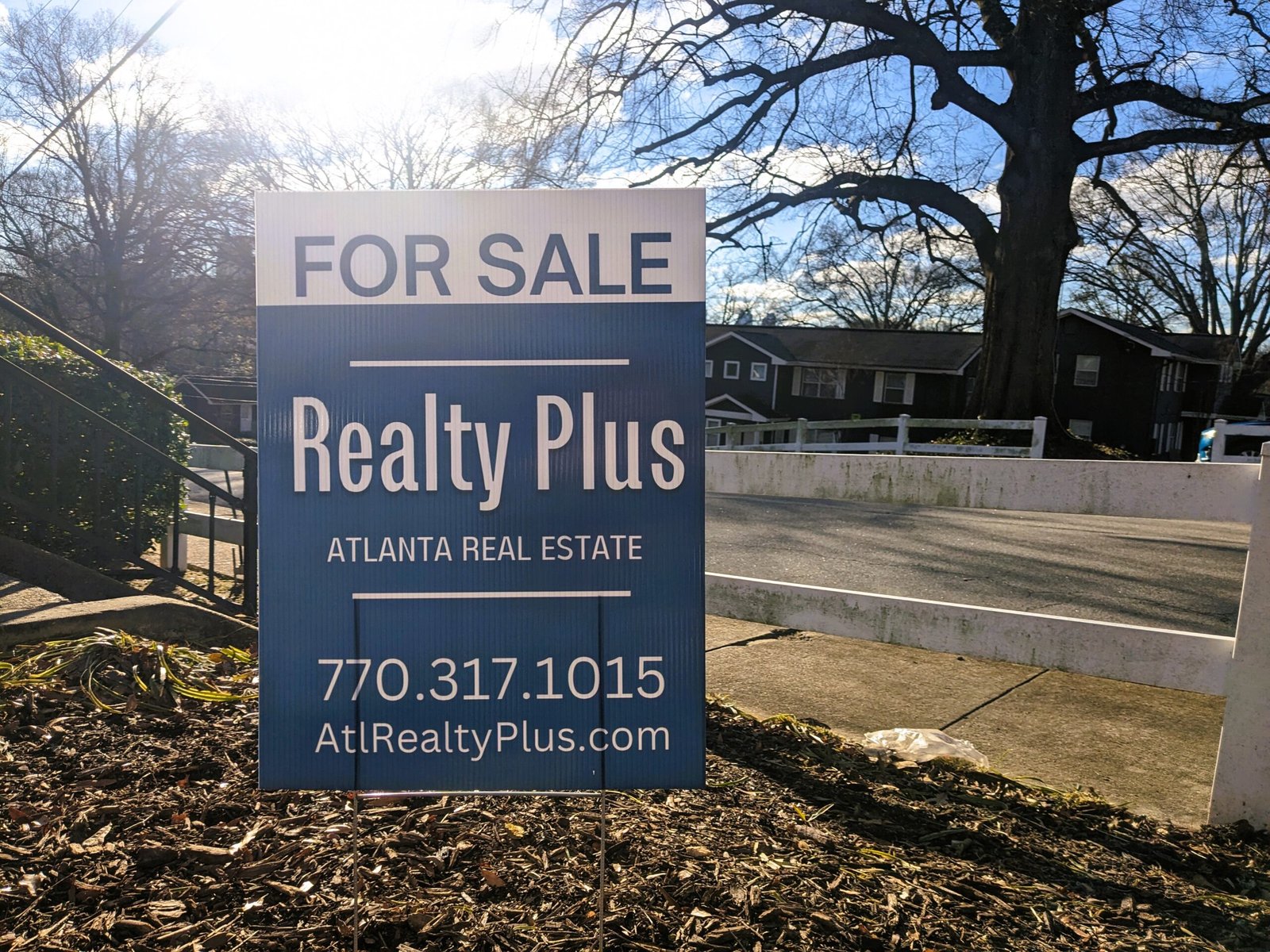

- Atlanta Real Estate, Owner Financing Homes, Top News
Guide to Owner Financing: How You Can Buy a Home with Just 5%-10% Down
- By rich
What is Owner Financing?
In this arrangement, the buyer makes payments directly to the seller, often with a lower down payment and more flexible terms than a conventional loan.
This financing method can be particularly advantageous for buyers who may not qualify for traditional loans due to credit issues or other financial constraints. It also provides sellers with the ability to sell their property more quickly and potentially at a higher price.
Why Consider Owner Financing?
Owner financing offers several benefits, particularly for buyers:
Easier Qualification: Unlike traditional mortgages, which require strict credit checks and income verification, owner financing can be more lenient, making it accessible to a broader range of buyers.
Flexible Terms: The terms of the loan, including interest rates, payment schedules, and the length of the loan, can be negotiated directly with the seller, allowing for greater customization to meet the buyer’s needs.
Lower Down Payment: Buyers can often secure owner financing with a lower down payment, typically ranging from 5% to 10%, making it easier to afford the upfront costs.
Faster Closing: Without the need for bank approvals, the closing process can be quicker, allowing you to move into your new home sooner.
How to Structure an Owner Financing Deal
Structuring an owner financing deal requires careful planning and negotiation. Here’s a step-by-step guide to help you understand how to make it work:
1. Determine the Down Payment
Most owner financing deals require a down payment of 5%-10% of the purchase price. This amount is negotiable and can depend on various factors, including the buyer’s financial situation and the seller’s willingness to accept a lower upfront payment.
Example:
If you’re buying a home priced at $300,000, a 5% down payment would be $15,000, and a 10% down payment would be $30,000.
2. Negotiate the Interest Rate
Interest rates in owner financing deals can vary widely. The rate is usually higher than a traditional mortgage due to the increased risk for the seller. However, since it’s a private agreement, the rate is negotiable.
Example:
If a traditional mortgage offers a 6% interest rate, an owner-financed deal might have a rate of 7%-8%. This difference can be balanced by negotiating other terms, such as a longer repayment period.
3. Set the Loan Term
The loan term refers to the length of time over which the loan will be repaid. Typical terms for owner financing range from 3 to 5 years, but they can be longer or shorter depending on the agreement.
Example:
You might negotiate a 5-year loan term with a balloon payment at the end. This means you’ll make regular monthly payments for 5 years, with the remaining balance due in a lump sum at the end of the term.
4. Create a Payment Schedule
The payment schedule can be structured in various ways, including monthly payments, bi-weekly payments, or even interest-only payments. The schedule should be clearly outlined in the contract to avoid any confusion.
Example:
For a $300,000 home with a 7% interest rate and a 5-year term, your monthly payments could be around $1,980. This amount will vary based on the down payment and loan term.
5. Draft a Promissory Note and Mortgage Agreement
A promissory note and mortgage agreement are essential legal documents that outline the terms of the loan, including the payment schedule, interest rate, and any penalties for late payments. These documents protect both the buyer and seller and should be drafted by a real estate attorney.
Common Scenarios and Examples
To better understand how owner financing can work, let’s explore some real-life scenarios:
Scenario 1: A First-Time Homebuyer with Limited Savings
Jane is a first-time homebuyer looking to purchase a home priced at $250,000. She has saved $15,000, which is 6% of the purchase price. Jane’s credit score is lower than what traditional lenders typically require, making it difficult for her to secure a mortgage.
Solution:
Jane finds a seller willing to offer owner financing. They agree on a 6% down payment, a 7.5% interest rate, and a 5-year loan term with monthly payments of approximately $1,900. This arrangement allows Jane to become a homeowner without needing to qualify for a traditional mortgage.
Scenario 2: An Investor Looking for Flexible Terms
John is an investor interested in purchasing a rental property for $400,000. He has $40,000 available for a down payment (10%) but wants to avoid tying up more cash in the property.
Solution:
John negotiates an owner financing deal with the seller, agreeing to a 10% down payment, a 6.5% interest rate, and a 7-year term. This gives John the flexibility to manage his cash flow while acquiring the property.
Risks and Considerations
While owner financing offers numerous benefits, it’s essential to be aware of potential risks:
Higher Interest Rates: Owner-financed loans often have higher interest rates than traditional mortgages, which can result in higher monthly payments.
Balloon Payments: Many owner financing deals include a balloon payment at the end of the term. Buyers must be prepared to either pay this lump sum or refinance the loan.
Legal Complexities: Without proper legal guidance, owner financing deals can become complicated. It’s crucial to work with a real estate attorney to ensure that all documents are correctly drafted and executed.
Limited Protections: Unlike traditional mortgages, owner financing doesn’t offer the same protections for buyers, such as the right to foreclosure prevention programs.
Is Owner Financing Right for You?
Owner financing can be an excellent option for those who may struggle to secure traditional financing but are ready to take the plunge into homeownership. By understanding the ins and outs of this financing method, you can negotiate a deal that works for you and move one step closer to owning your dream home.
If you’re considering owner financing, it’s essential to work with a real estate professional who understands this unique market. At ATL Realty Plus, we specialize in helping buyers like you find the perfect financing solution. Contact us today to learn more about how we can assist you in achieving your homeownership goals.
Related Posts


Unlocking Real Estate Syndication $100k
Modern Marketing

Mastering Real Estate Deals: Key Metrics Evaluation Strategies
Unlock the potential of real estate syndication by learning how to evaluate deals like a seasoned investor. This guide demystifies essential metrics and provides actionable insights to help you make informed, profitable decisions.

Unlocking Real Estate Syndication $100k
educating yourself, defining your goals, building a network, and conducting thorough due diligence—you position yourself for success in the world of real estate syndication. Remember, every investment carries risks, but with careful planning and informed decisions, you can navigate these challenges.

Real Estate Syndication: Pooling Resources for Bigger Investment Opportunities in Atlanta
Real estate syndication enables investors to pool their capital and expertise to acquire larger properties that would otherwise be unattainable individually. Learn how this powerful investment strategy works, its benefits, risks, and how you can use it to capitalize on Atlanta’s growing real estate market.

Mastering Lease Options: A Flexible Strategy for Real Estate Investors in Atlanta
Lease options offer a versatile way to control properties, generate income, and reduce risk. In this comprehensive guide, discover how to master this flexible strategy and apply it to the Atlanta real estate market.

Accelerate Depreciation Deductions for Maximum Tax Benefits
Unlock the full potential of your real estate investments by combining cost segregation with a 1031 exchange. Learn how this powerful strategy can accelerate depreciation deductions and maximize your tax savings.

Leveraging Opportunity Zones: How to Defer Capital Gains While Revitalizing Communities
Discover how investing in Opportunity Zones can help you defer capital gains taxes while making a positive impact on underserved communities. Learn how this strategy works and the benefits it offers for real estate investors.

Building a Strong Offer: How to Present Yourself to a Seller and Seal the Deal
When making an offer on a property, it’s crucial to present more than just a competitive price. Learn how to craft a strong offer that aligns with the seller’s needs, builds trust, and demonstrates your commitment. From understanding the seller’s perspective to showcasing your financial stability, this guide walks you through the essential steps to make an offer that stands out and closes the deal.
Advance AI Business Analysis

Mastering Real Estate Deals: Key Metrics Evaluation Strategies

Unlocking Real Estate Syndication $100k

Real Estate Syndication: Pooling Resources for Bigger Investment Opportunities in Atlanta

Mastering Lease Options: A Flexible Strategy for Real Estate Investors in Atlanta

Accelerate Depreciation Deductions for Maximum Tax Benefits
© 2024 All Rights Reserved.





